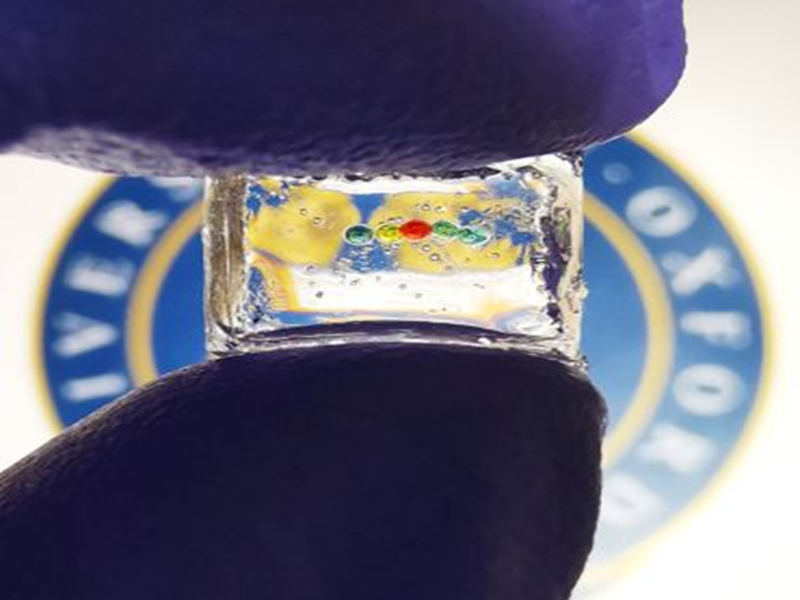Innovative Miniature Power Source: The Droplet Battery Revolution
Written on
Chapter 1: Introduction to the Droplet Battery
The quest for effective power solutions for microscale devices has always been challenging. These devices, often used in specialized fields like medical technology, require energy sources that are not only compact but also high in energy density. The increasing need for sustainable and reliable power, particularly for medical implants, complicates this quest further.
To address these formidable challenges, innovative methods such as micro batteries, energy harvesting techniques, and bio-integrated power sources are being explored. Researchers are diligently working on these solutions to facilitate the broader adoption of microscale devices across various domains, focusing on overcoming limitations related to size, efficiency, and durability.
Section 1.1: The Oxford Breakthrough
In a significant advancement, scientists from the University of Oxford's Department of Chemistry have engineered a miniature power source that can influence the behavior of cultured human nerve cells. Inspired by the natural electricity generation of electric eels, this innovative device employs internal ion gradients for energy production. The soft power source is formed by layering five nanolitre-sized droplets made of a conductive hydrogel, which contains absorbed water and polymer chains.

“By harnessing ion gradients, we have developed a miniature, biocompatible system for regulating cells and tissues on the microscale, which opens up a wide range of potential applications in biology and medicine.”
~ Dr. Yujia Zhang, Lead Researcher
Subsection 1.1.1: Functionality of the Droplet Battery
The droplets within the power source are designed with varying chemical compositions, creating a salt concentration gradient throughout the chain. Each droplet is separated by lipid bilayers, which serve both to support the structure and prevent ion transfer between droplets. The power source is activated by cooling the entire structure to 4°C and altering the medium surrounding it, which disrupts the lipid bilayers, causing the droplets to merge into a single hydrogel.
This process allows ions to flow through the conductive hydrogel, from the high-salt droplets at the ends to the low-salt droplet in the center. By connecting electrodes to the end droplets, the energy from the ion gradients is transformed into electricity, rendering the hydrogel structure a viable power source. Remarkably, the activated droplet battery sustained a current for over 30 minutes, achieving a peak power output of around 65 nanowatts using a unit made of 50 nanolitre droplets.

These devices demonstrated stable current generation even after 36 hours of storage. The research team illustrated the device's capability to directly influence the activity of living cells by connecting it to droplets containing human neural progenitor cells marked with fluorescent dye for tracking purposes. Upon activation of the power source, time-lapse videos captured the initiation of intercellular calcium signaling waves within the neurons, instigated by the localized ionic current. The modular design of the device may allow for the combination of multiple units to enhance both voltage and current output.
Chapter 2: A Vision for the Future
The first video titled "This Silicon Battery BREAKTHROUGH from Paraclete is IN PRODUCTION!" details how innovative silicon battery technology is changing the landscape of energy storage. This breakthrough could have wide-ranging implications for various applications, including consumer electronics and electric vehicles.
The second video, "Batteries to the Future | Fully Charged," explores the future of battery technology and its role in sustainable energy solutions. This discussion highlights how advancements in battery systems can lead to more efficient energy use and better integration with renewable sources.
Researchers have also unveiled a versatile battery system that not only stores and delivers power but also generates energy, indicating a dual-purpose capability that could redefine energy solutions in the near future. This scalability could pave the way for powering advanced wearable tech, bio-hybrid interfaces, implants, synthetic tissues, and microrobots. For example, by linking 20 five-droplet units in series, researchers successfully powered a light-emitting diode, demonstrating the system's potential to meet practical voltage requirements.
The team envisions automating the production of these devices, potentially using a droplet printer, to fabricate extensive networks comprising thousands of power units. The complete findings of this groundbreaking research were published in the Journal of Nature.